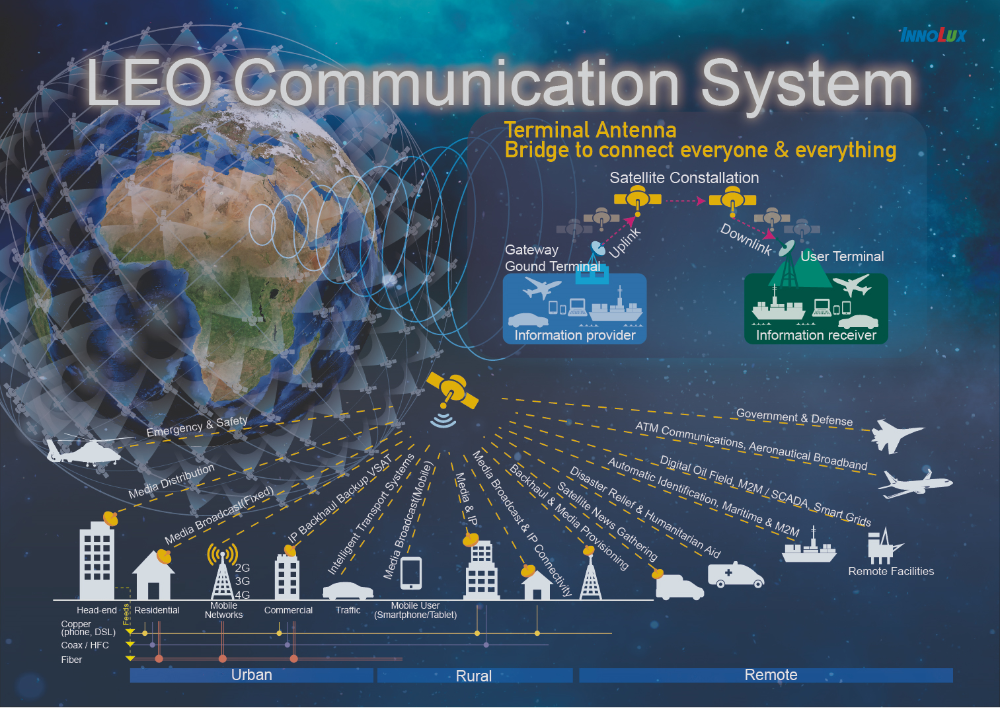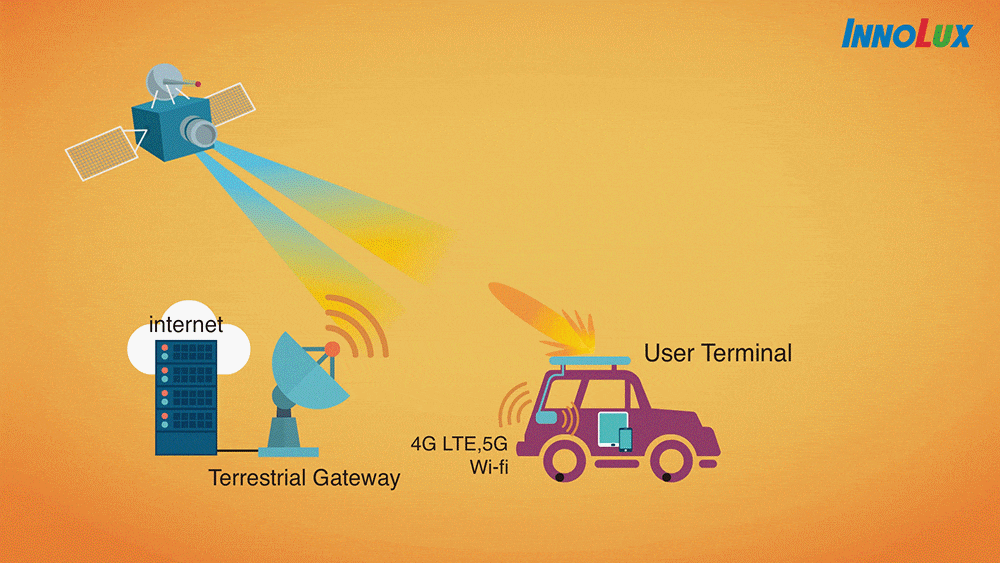



The fifth-generation mobile networks (5G) aim to connect everything in the world anytime and anywhere. One of its applications is to facilitate communications in cars, ships, airplanes, etc. Since such vehicles are not limited in terms of moving in areas with scattered or zero base stations, the existing terrestrial communication networks alone cannot always satisfy the quality of 5G communication. In this regard, non-terrestrial communication networks, particularly geosynchronous (GEO) and low earth orbit (LEO) satellite networks, shall provide solutions for high-quality 5G communications for cars, ships, and airplanes in various terrains and regions, and maintain good 5G communication quality.

Conceptual picture of hybrid terrestrial-satellite communication network
Vehicles (cars, ships, and airplanes) mostly establish communication with a satellite and maintain that communication while both the vehicle and satellite are moving. For mobile satellite communication, the transmitted/received direction of electromagnetic beam from an antenna equipped on cars, ships, and airplanes needs to be adjusted to align the antenna of the satellite in the sky. So a beam-steering antenna will be an essential role in maintaining stable mobile satellite communication.

Conceptual picture of mobile satellite communication and a beam-steering antenna equipped on the vehicle
A liquid crystal antenna is an electrically -controlled beam scannable antenna that changes the transmitted/received direction of the electromagnetic beam through external signals. A liquid crystal antenna is composed of multiple sub-wavelength liquid crystal metamaterial structural units on a surface. But how does it adjust the transmitted/received direction of the electromagnetic beam according to the coordinates of satellites, cars, ships, and airplanes?
First, calculate the phases required for the electromagnetic wave transmission or reception on each sub-wavelength liquid crystal metamaterial unit on the antenna aperture, and then adjust the arrangement of the liquid crystal molecules for each sub-wavelength liquid crystal metamaterial unit by the external bias voltage to generate the transmitted/received electromagnetic wave in a specific direction.
Innolux focuses on the business opportunity of massive requirements of electronically-controlled beam scannable antenna in the mobile satellite communication and leverages the experiences of the TFT LCD industry for the production of LC antenna. Relying on its exclusive manufacturing processes, Innolux has been expanding its production capacity for LC antenna and ready to seize the vast market of the user terminal of low-orbit satellite communications.